Rain chain ideas: 9 easy water-saving methods for your yard
Divert water to where you need it most with these simple rain chain ideas, and add a decorative touch to your outdoor space in the process
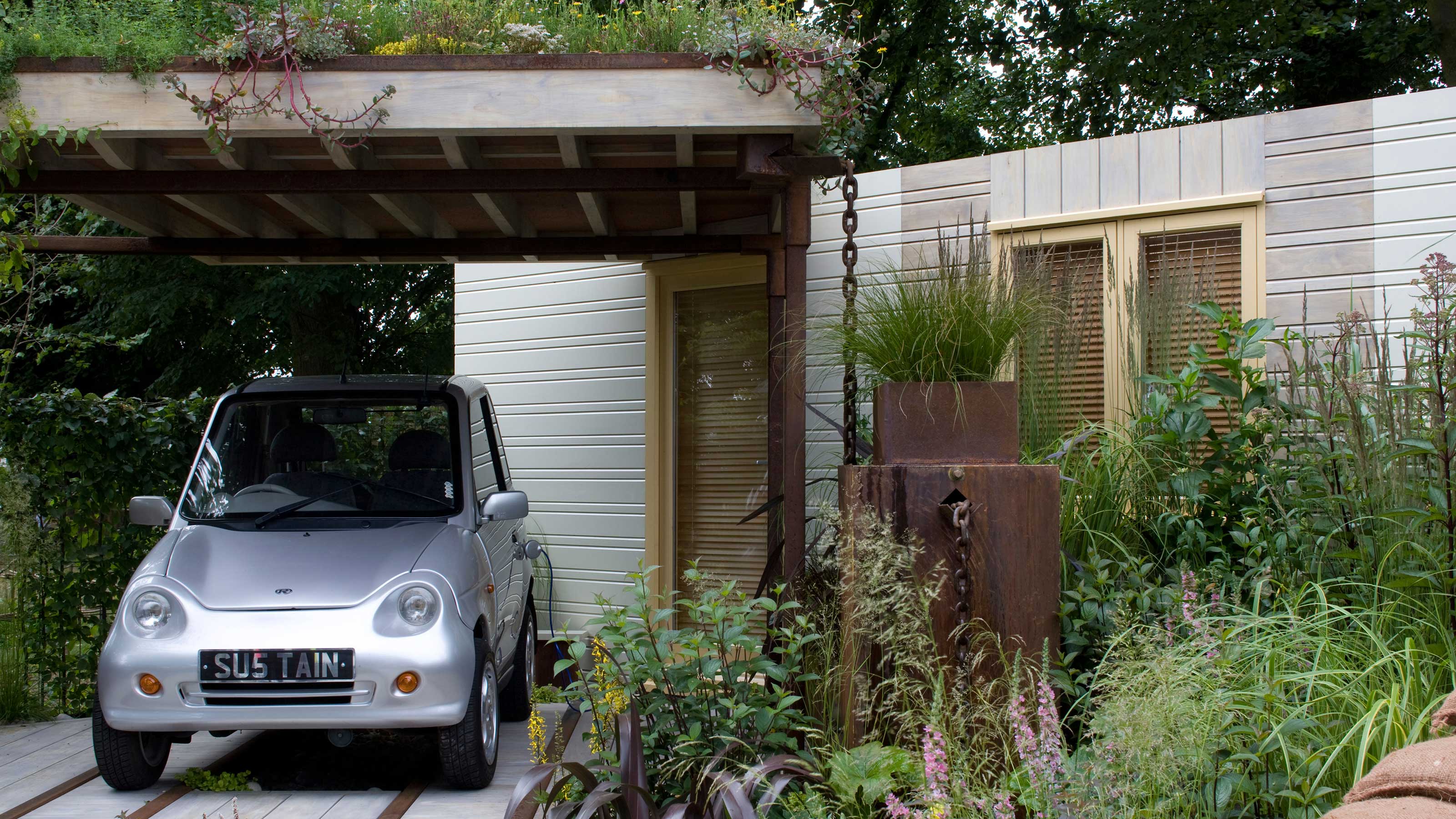

Are you wondering how to incorporate the latest rain chain ideas into the design of your garden? Perhaps you're trying to save water during the rainy season, or to prevent against house damage caused by flooding. When hung perpendicular to the ground, a rain chain can divert rain away from your house, help with watering plants or store excess water for later use.
Of course, it's worth asking 'what is a rain chain?' first. Well, they're just like they sound! A rain chain is an elegant solution to directing any water run-off from your roof, gutters and eaves to a specific spot.
'Rain chains are a creative alternative to a downpipe, but consider where the water will land,' says garden designer Wendy Allen. 'A rain planter, water butt or dipping tank are all great ways to store and slow rainwater to reduce the amount that goes into our overloaded drainage system.'
Make sure to place a sufficiently sized container or basin at the base of your rain chain, or alternatively direct it to a place where the water can safely drain away.
9 rain chain ideas to try in your plot
Whether you're looking for an interesting feature for your patio or want to learn how to collect rainwater as efficiently as possible, these rain chain ideas have lots to offer.
1. Create a zen-like space with a traditional rain chain
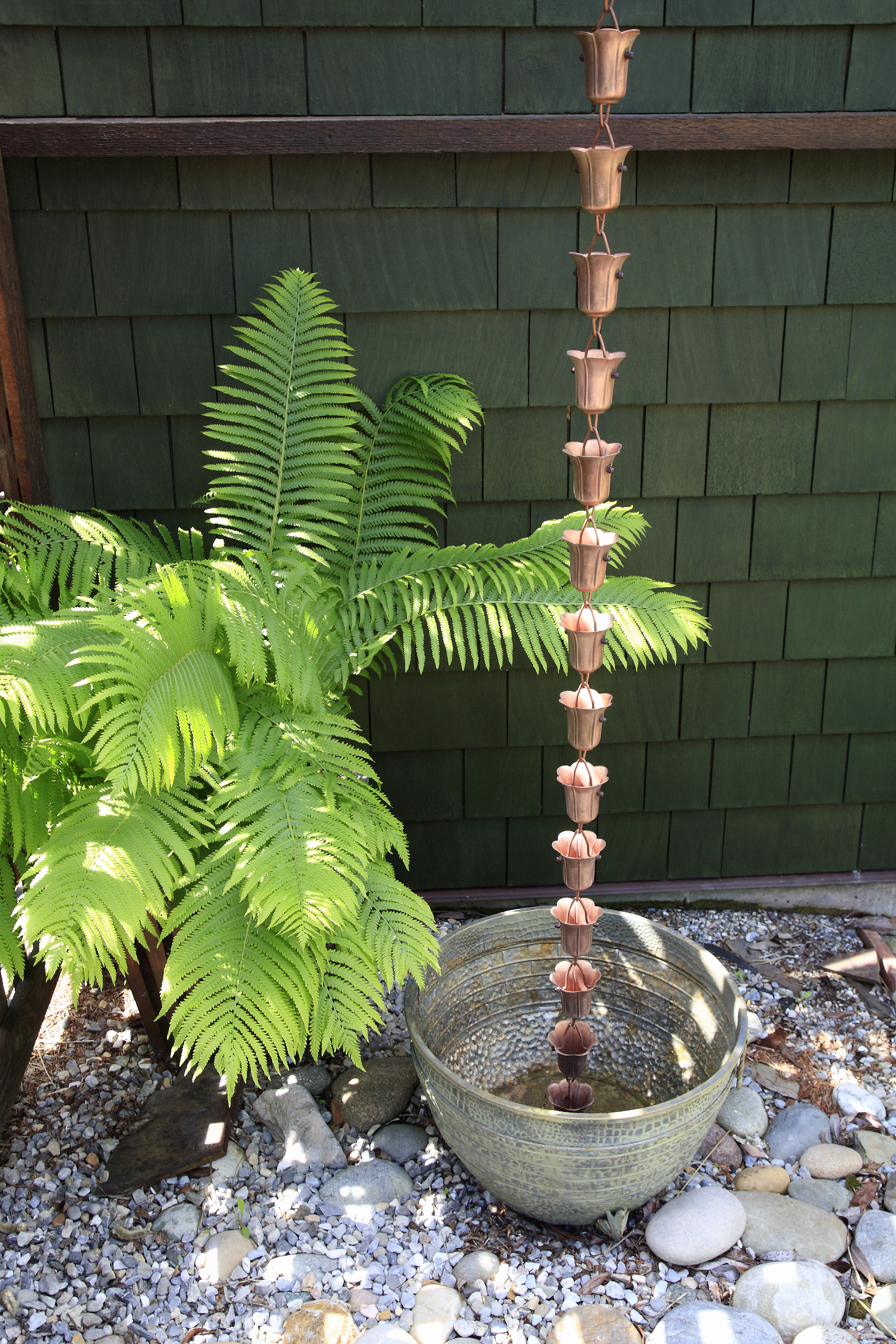
When home life gets on top of you, designing your own peaceful refuge outside is the perfect solution. With soothing sounds of trickling water and the gently curved edges of round stones and basins, the classic elements of a Zen garden call for an elegant rain chain to tie the scene together.
Why not include a rain chain in your own Zen garden ideas? You could trail the chain into a pre-existing fountain or tuck it subtly behind the waving fronds of a palm leaf, and let the dappled shadows lull you into a wholly relaxed state.
2. Design a sustainable entrance way
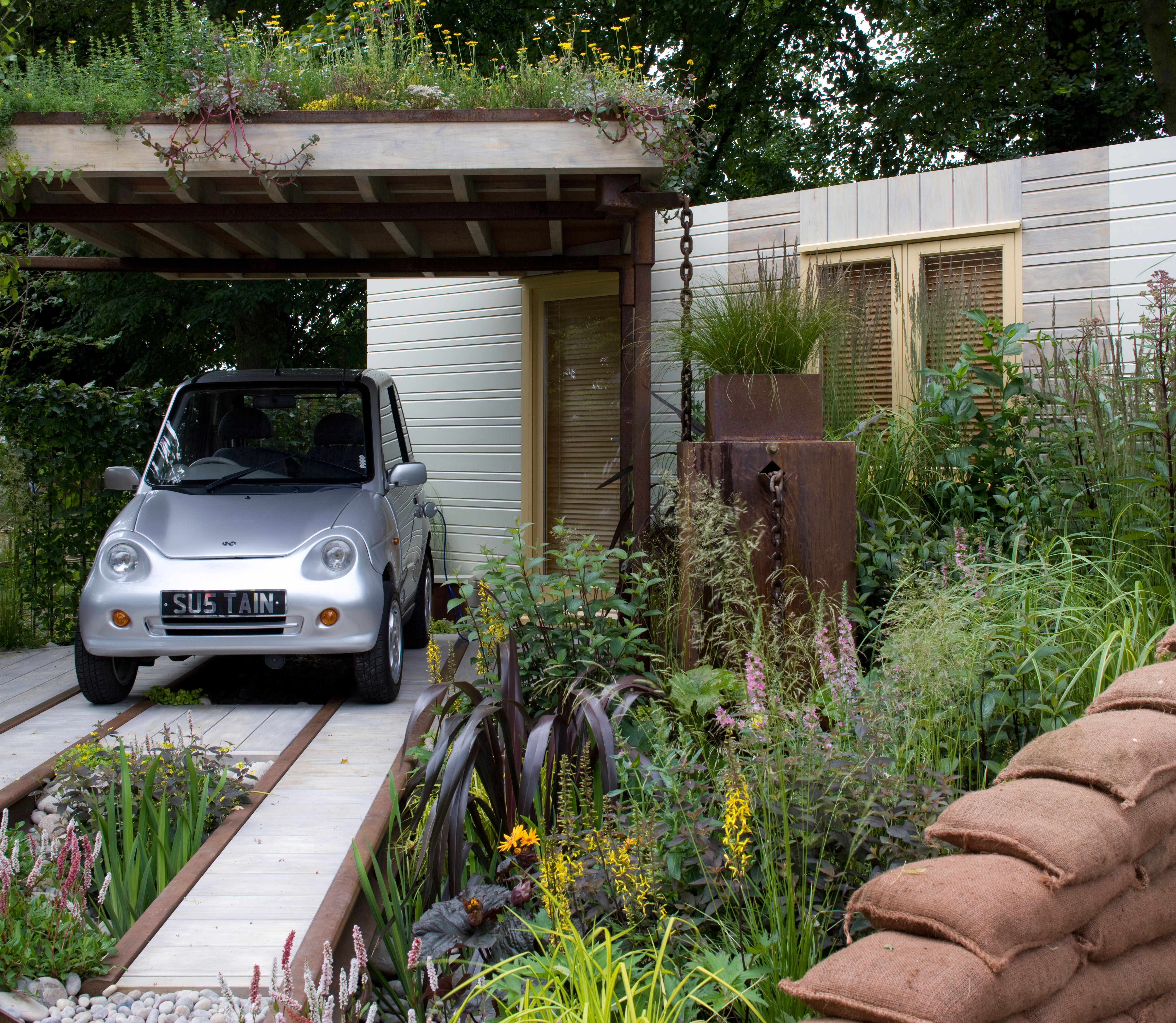
If you're a fan of sustainable gardens, you will love the idea of using rain chains in a symbiotic way, like designer Wendy Allen did in her award-winning 'The Rain Chain' garden at RHS Hampton Court Flower Show.
As you'll see above, the living green roof of a home garage is connected to a water butt via a sturdy rain chain. The water is then channeled further, making a water feature of the driveway.
'A green roof and a rain chain make a great team,' says Wendy. 'Green roofs can absorb up to 60% of the rain that falls on them, so the rain chain receives a gentler flow of rainwater.'
3. Irrigate your plants with a Japanese-style rain chain
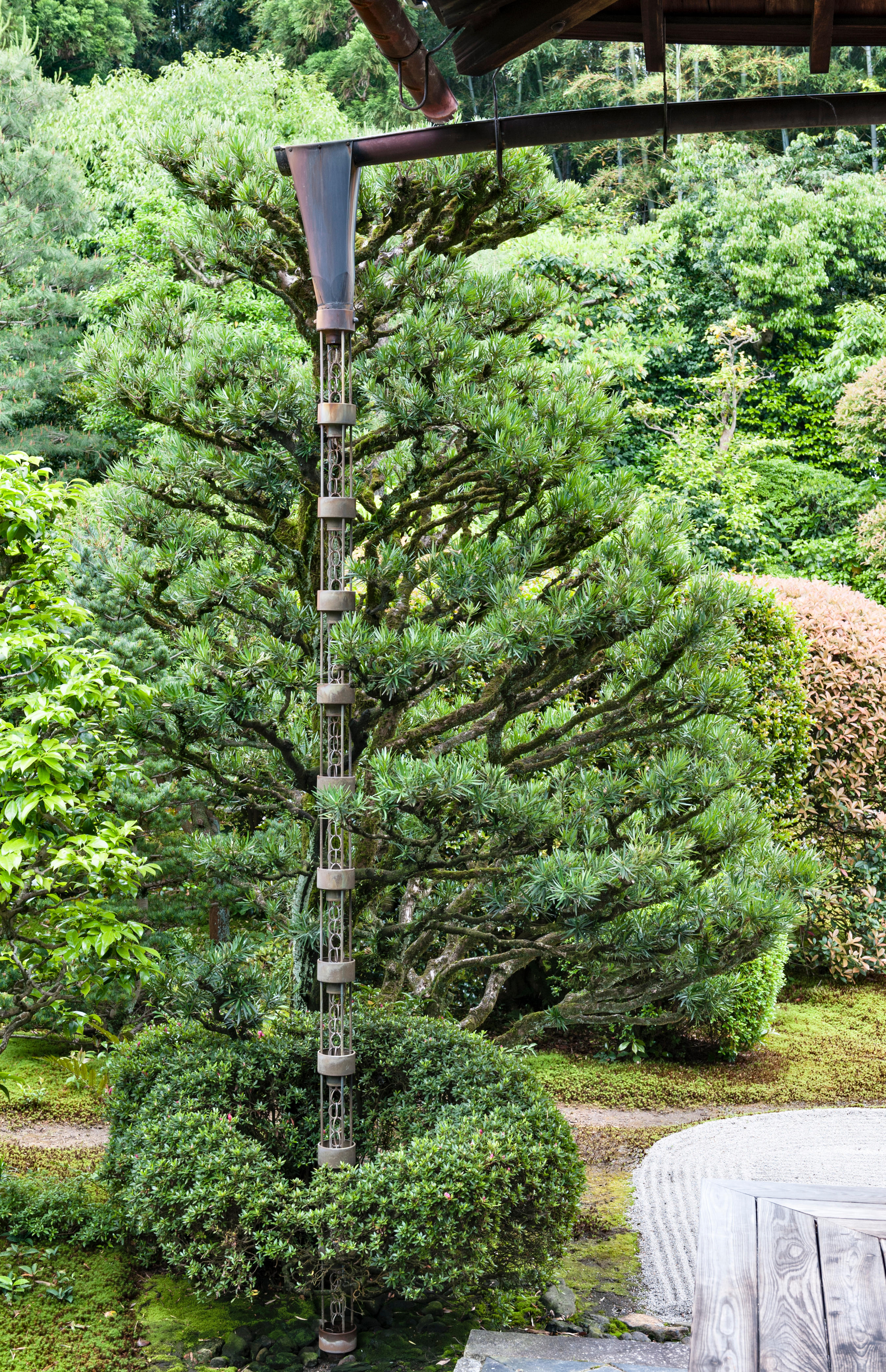
Some parts of your garden may need more copious watering than others. Cut out the middleman – and give your watering can or garden hose a break – by angling a rain chain directly towards these plants. It's a great garden water saving tip, plus they'll relish the extra water!
This can be a good option for watering plants while you're away on vacation as any rainwater will automatically be directed towards your plants rather than escaping down drains.
It's also a nod to Japanese garden ideas, as that's where using rain chains began. They're often seen hanging from the eaves and gutters of Japanese temples and helping to irrigate the surrounding greenery.
4. Use a rain chain to make a sensory garden
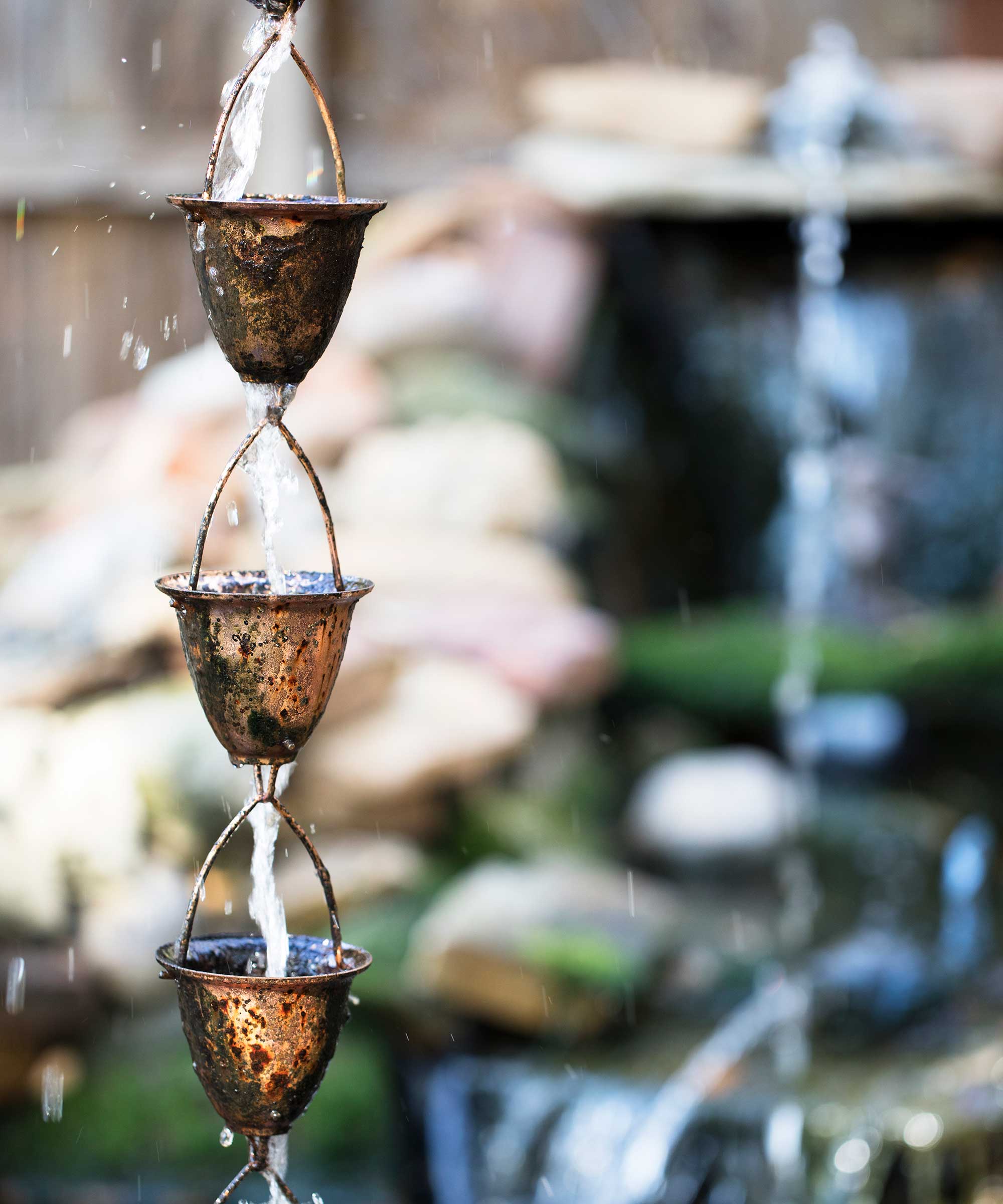
Rain chains are a wonderful addition to a sensory garden, as they can be an effective way of stimulating the senses. In turn, this allows visitors to deepen their connection to the landscape around them.
Ali Yang-Wooldridge, director of Gardenesque, says that rain chains were initially designed to guide the rainwater visibly downwards from your guttering and downpipe in an aesthetically pleasing way. 'They are similar to wind chimes when water passes through them, which makes them an attractive feature for gardens.'
5. Use a rain chain for drainage directly below your patio

Below-ground garden drainage is a solution used by many to avoid water pooling on outdoor decks and patios.
If the water falling from a downspout makes too much of a mess, you can attach a rain chain to make the water fall in a more streamlined fashion. You could even use it to help direct rainwater away from paved areas to your pots and flower beds.
6. Integrate a rain chain into a water feature

The trickling sound of rainwater is immensely soothing for many of us. You can easily capitalize on that calming sound effect by building a water feature around a rain chain, hanging it up above a pretty container or fountain. As an added bonus, you won't need to refill the fountain in the rainier months!
Having a constant supply of rainwater in your water feature will also keep it looking fresh throughout the year and can prevent it from freezing over in winter.
7. Use rain chains to help attract birds and wildlife

An eco-friendly way to use a rain chain is as a means of providing water to local wildlife. Some rain chain ideas are designed to easily facilitate perching from wild birds, so they can dip their beaks and take a drink.
The Jay Day garden at the RHS Chelsea Flower Show 2022 combines garden design with attracting jays to a small urban space. Along with perches, insect hotels, and a rattan latticework that offers nesting materials, the garden features an attractive rain chain which channels water into a bird bath and fountain.
8. Fill up a water butt with a water-saving rain chain

There are so many rainwater benefits for watering plants, that it's a good idea to collect and store as much at home as possible.
One of the easiest ways is to use a rain chain to divert runoff from your roof into a water butt. Ali Yang-Wooldridge, director of Gardenesque says rain chains are also eco-friendly, helping to conserve water when directed into a water butt, flower bed or container for re-use.
You can easily scoop water from a large receptacle like this and use it to water your plants – just make sure to use a cover on top to prevent debris from falling inside and contaminating the water.
9. Prevent flash flooding with a rain planter

Rain gardens are increasing in popularity as people look for imaginative ways to reduce the possibility of flooding in their outside space. For those worried about this issue, using a rain planter can be a fantastic idea to mitigate the risk.
Designer Wendy Allen installed these rain planters at a local primary school (shown above) and told us, 'these rain planters are fed by copper rain chains. They store and slow the rainwater, helping to reduce flash flooding.'
Do rain chains work in heavy rain?
Although some rain chains might appear more ornamental than heavy duty, their main purpose is to slow the flow of water, whether a light misting or a heavy downpour.
‘The surface tension of water helps the rain cling to the rain chain, but some splashing will occur in heavier rain events,' says Wendy Allen. 'It's best to hang the rain chain away from the wall where possible.’
To mitigate this splashing, you can use a larger vessel at the base of the rain chain to collect more water over a wider surface area. You'll also want to attach your rain chain to a gutter or downspout to achieve the best results.

What do you put at the bottom of a rain chain?
You can place virtually any container at the bottom of a rain chain. Most gardens will feature a basin, rain barrel or ceramic jar, but you can also place a rock garden, fountain, a garden planter, rain barrel, or even an underground storage tank.
If your backyard is prone to heavy weather on a regular basis, it may be prudent to opt for larger containers to accommodate the rainfall.

Freelance writer and author Flora Baker is a keen amateur gardener and houseplant enthusiast. Her small garden in South London is a constant work in progress as she gets to grips with snail prevention, DIY trellises and what to plant in shady spots overrun with ivy.
